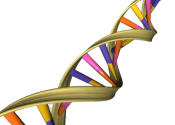Study reveals a role for jumping genes during times of stress
Only 1 percent of human DNA codes for proteins, and approximately half of the rest of the genome is made up of what used to be called "junk" sequences that can copy themselves into RNA or DNA and jump from one location to ...









